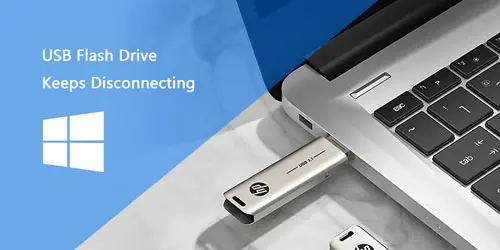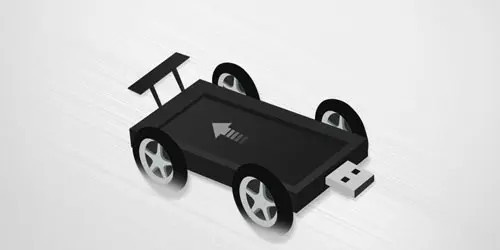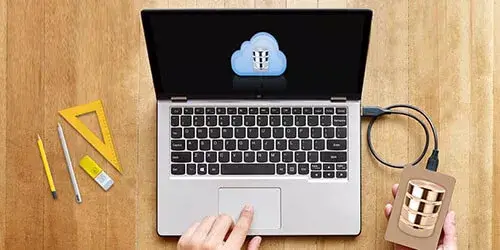Fix: USB Device Descriptor Request Failure (Unknown USB device) on Windows 10

"Unknown USB Device (Device Descriptor Request Failed)" is one of the most common issues with USB device on Windows 10 since thousands of users have reported it. Therefore, this article aims at helping you fix "USB Device Descriptor Request Failure" error on Windows 10 via 6 methods.
- Method 1 - Cut off power supply and reinsert USB devices.
- Method 2 - Check for hardware issues through other USB ports or computers.
- Method 3 - Update or reinstall the USB Drive for the unknown USB in Device Manager.
- Method 4 - Disable Fast Startup option.
- Method 5 - Run the Hardware and Device troubleshooter.
- Method 6 - Disable the USB selective suspend setting.
Method 1 - Cut off power supply and reinsert USB devices
Note: This is only for portable devices like laptops.
Temporarily unplug the power supply and then insert the USB device. This method may fix this unknown USB device error on Windows 10 for some reason. Worth a shot, anyway.
Method 2 - Check for hardware issues through other USB ports or computers.
There's an odd that the USB device couldn't be used due to some hardware issues, which means that the problem is about the computer instead of the operating system. We have two ways to check it you are in this case:
1. Plug the USB device into a different USB port;
2. Plug the USB device into a different computer.
And see how your USB device is working under each circumstance. If the USB device turns out well, then it is most likely that there's something wrong with the hardware.
Method 3 - Update or Reinstall the USB Driver for the unknown USB
Wrong drivers which are inappropriately updated by Windows during system update can cause the error, too. Under this circumstance, we will have to uninstall the USB driver.
Step 1: Press Windows + R simultaneously and there the Run utility comes up.
Step 2: Input "devmgmt.msc" without the quotation marks, click OK. Device Manager interface pops up.

Step 3: Expand the Universal Serial Bus controllers section, right-click the Unknown USB Device and choose Update Driver Software or Uninstall from the down-list. And finish this process with following instructions.
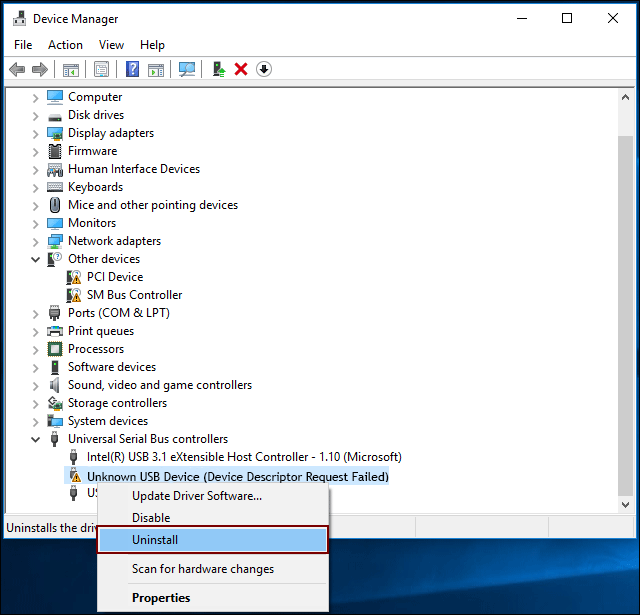
Step 4: Reboot the system when the uninstallation is complete. The rebooting will reinstall the drive automatically in the right way.
Method 4 - Disable Fast Startup option
Fast Startup combines elements of a cold shutdown and the hibernate feature. Systems that don't support hibernate won't support Fast Startup either while some devices just don't play well with hibernation. So, when coming to unknown USB device problem, it would be best to turn Fast Startup off. And there is no need to worry about faster Windows 10 booting because we have plenty of ways to fasten it.
Step 1: Open the Control panel and choose Power Options.
Step 2: Click on Choose what the power buttons do and then Change settings that are currently unavailable from a separating window from Power Options.

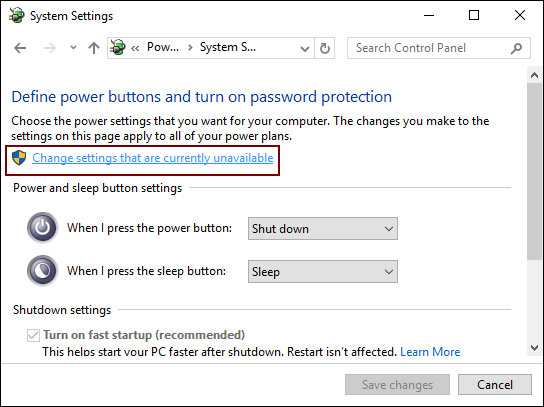
Step 3: Go to Shutdown settings and uncheck Turn on fast start-up (recommended) and click the Save changes button.
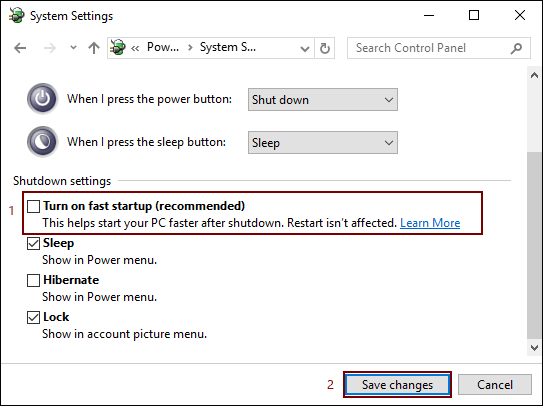
Step 4: Restart the computer.
Method 5 - Run the Hardware and Device troubleshooter
Troubleshooting is a functional inbuilt tool on Windows 10 to resolve the problem with the computer. Simply run the tool and it will find out the problem and offer a specific fix to resolve it.
Step 1: Select Troubleshooting on Control Panel.
Step 2: Click on Hardware and Sound and Next in the pop-up window. The system will start checking issue on hardware and device.
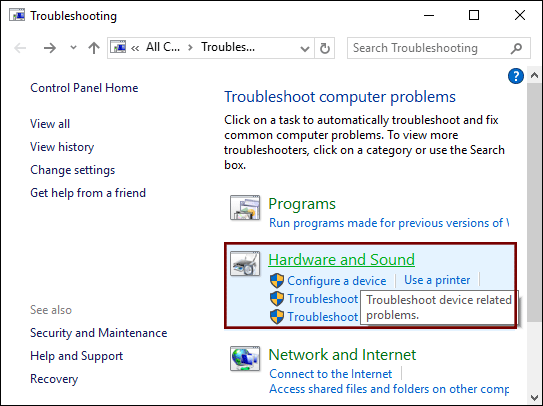
Step 3: Follow all of the on-screen instructions to identify any issues with your USB port or other related hardware. If anything is picked up, select the appropriate action to fix or get more information about the error.
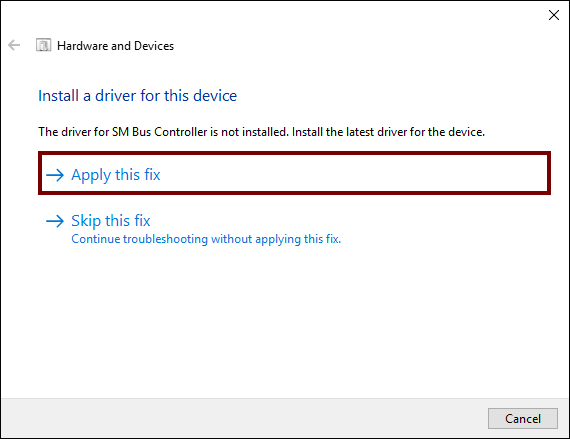
Step 4: After applying the fix, you'll need to restart the computer.
Method 6 - Disable the USB selective suspend setting
Selective suspend is the ability to power down and later resume an idle USB device while the computer to which it is attached remains in the working state (S0). For energy-efficient operation - especially on mobile PCs - all USB devices and drivers should support selective suspend.
Sometimes, to conserve power, USB selective suspend will shut off the idle USB device.
Step 1: Open up Control Panel and choose Power Options.
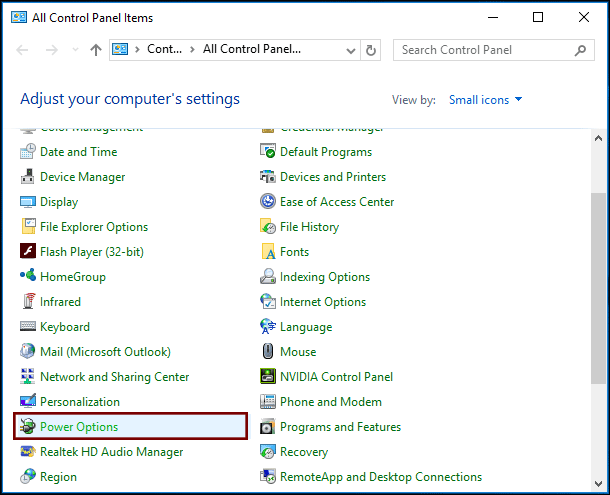
Step 2: Choose High-performance plan, and click on the Change plan settings link.
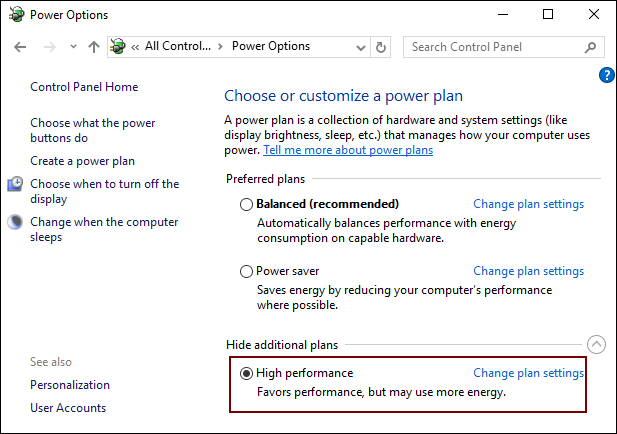
Step 3: Click on Change advanced power settings.
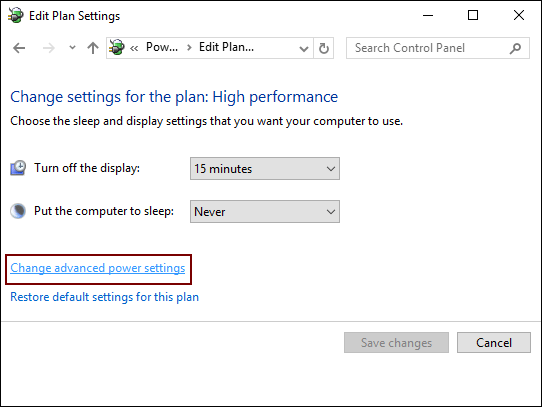
Locate USB settings and Disabled the USB selective suspend setting. And then click OK.
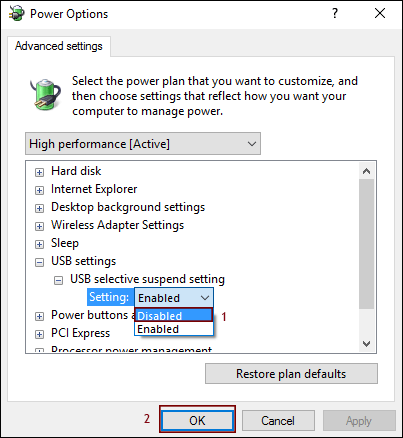
Bottom Line
Anyway, the "USB device descriptor request failed" error could be caused by not only faulty hardware or broken USB device or corrupted USB port but also some default settings such as power option, fast startup and USB selective suspend for less power consumption and higher running speed of Windows 10.
If the root of the problem is hardware or device into which the USB device is inserted, try another USB port or computer and take advantage of Troubleshooter on Windows 10. And sometimes, it works that merely cut off power and reinsert the USB device on a laptop.
If the reason is about some system settings on Windows 10, change settings in each section, for instance, change Power Options or disable USB selective suspend setting.
If something wrong happens to USB driver on Windows 10, then update or reinstall one for the unknown USB in Device Manager.
Hope that this article was able to help you resolve the Device Descriptor Request Failed (Unknown USB device) error on Windows 10.


